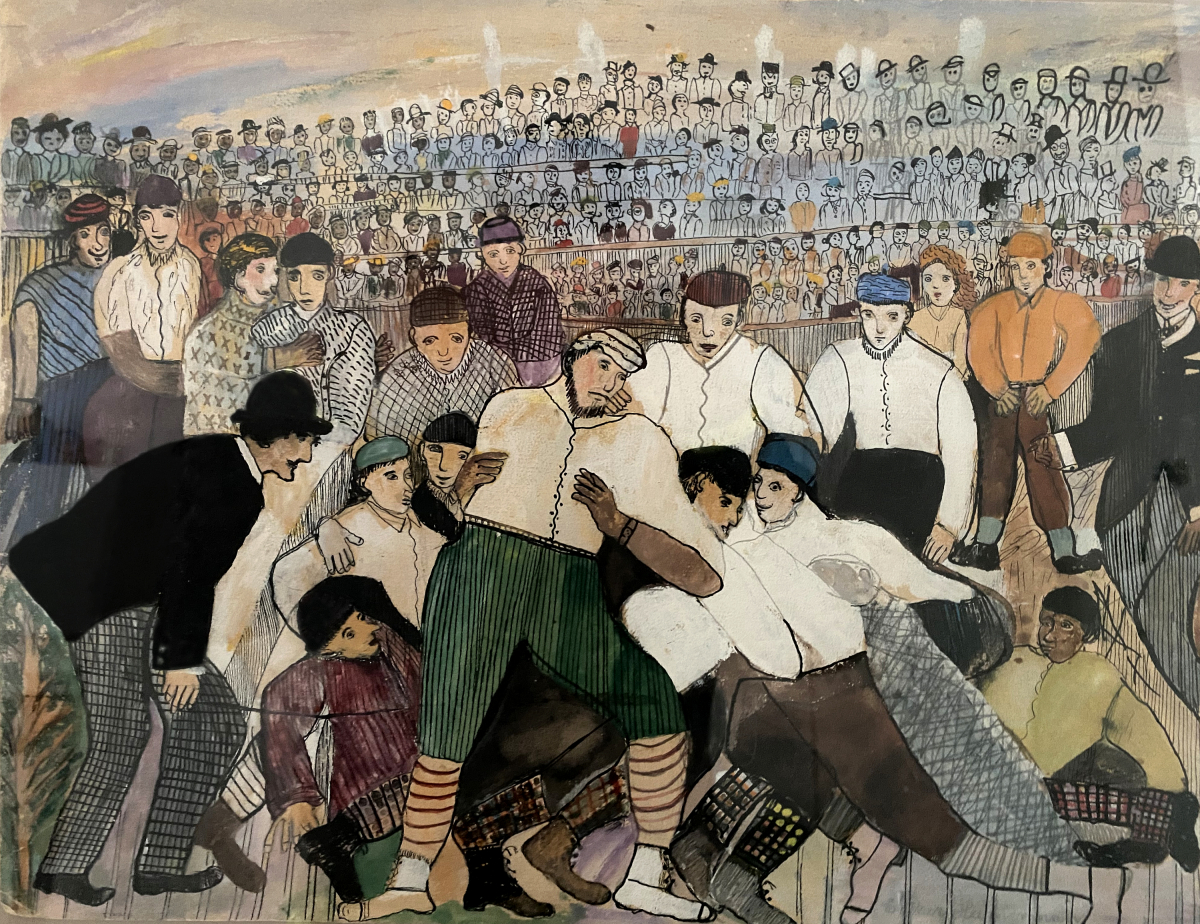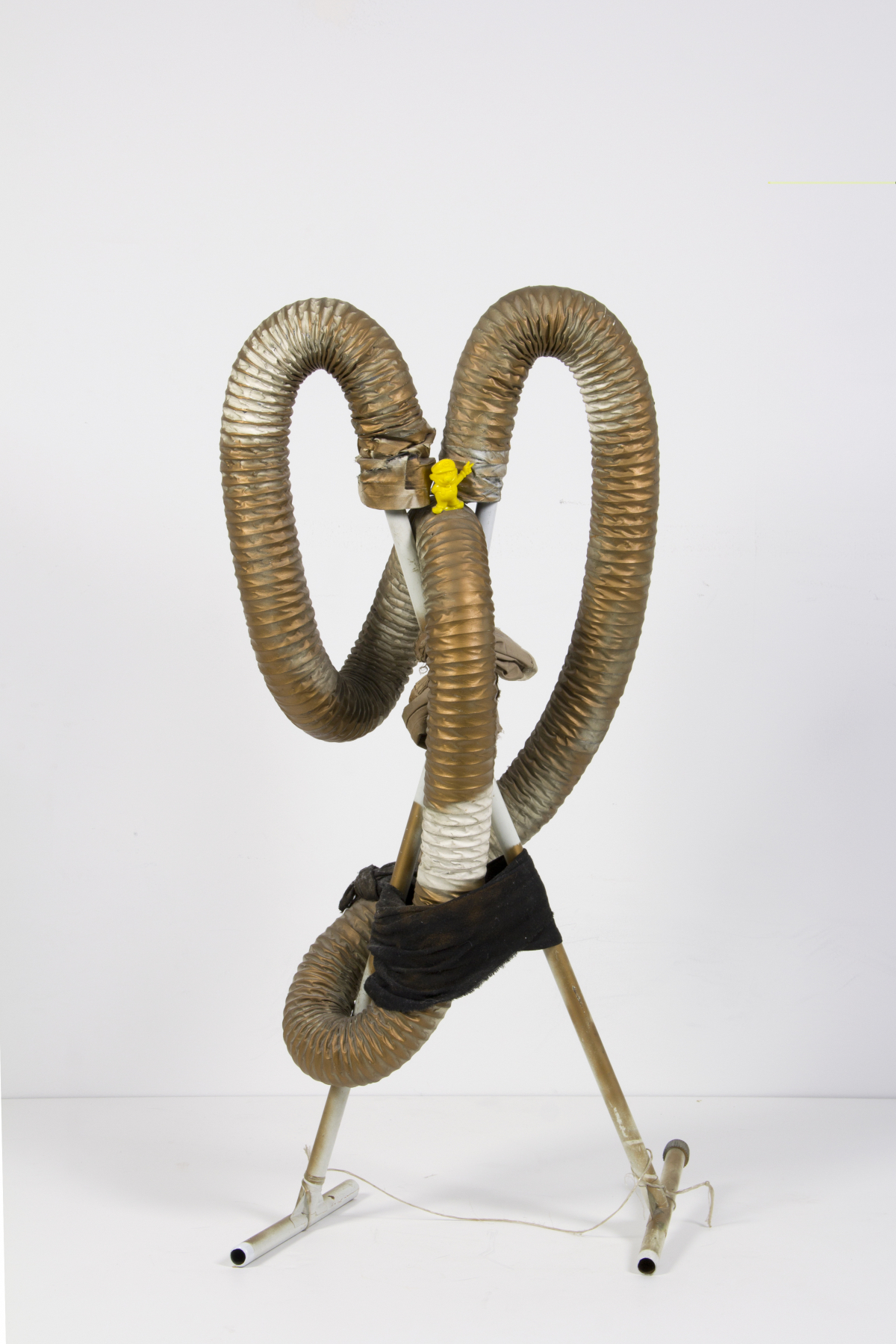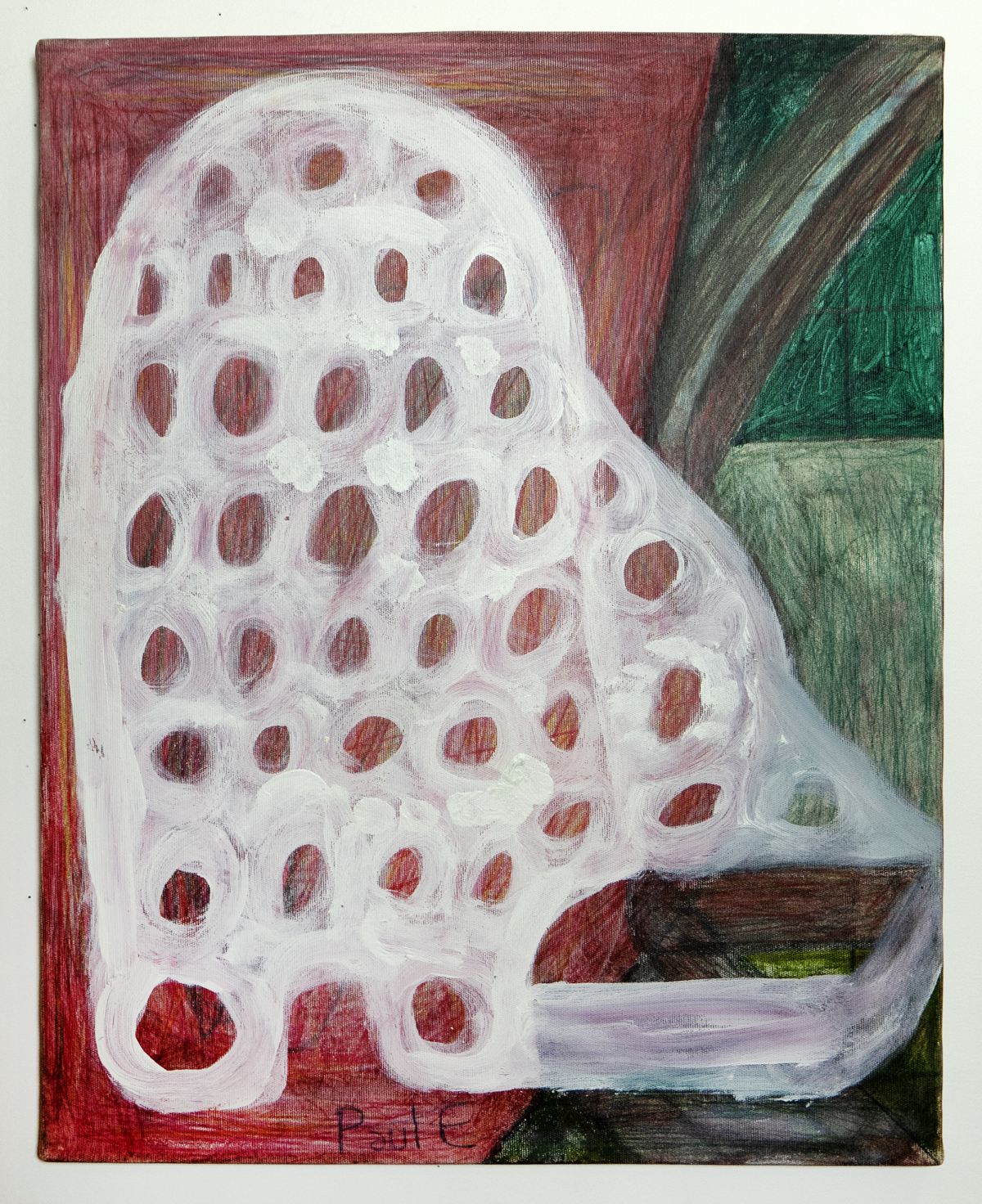
Welcome to Short Talks -- highlighting the many voices of the Art World. Today we are talking with curator Paul Laster, who's current exhibition, Relishing the Raw: Contemporary Artists Collecting Outsider Art, opens at the Outsider Art Fair at the Metropolitan Pavilion in New York on Thursday, January 16 and runs through Sunday, January 19, 2020.
Kathleen Cullen: Can you explain the the term Outsider artist and how that is different from mainstream artists?
Paul Laster: In my understanding of the term, Outsider artists are self-taught artists, who do not have an institutional education; artists who have been institutionalized because of mental conditions; and artists who were born with physical or mental disabilities that impair their work options. There is also another category of naive artists, who may have a college education in one field but start making art, which they had not been institutionally trained to do, at a later point in life.

KC: Who are some of the self-taught artists that we may already be familiar with but don't necessarily put in this genre?
PL: Niki de Saint Phalle, who has an upcoming survey show at MoMA PS1 was self taught, as was Carol Rama, who was awarded the Golden Lion for Lifetime Achievement at the Venice Biennale in 2003. Vincent Van Gogh, Frida Kahlo and Jean-Michel Basquiat were self-taught artists, and Jasper Johns, who dropped out of school, could also qualify as one.
KC: Your exhibit will feature Outsider Art from the collections of many established artists. What would you say their interest in the work is? How is it different than art collectors or the person who makes an occasional art purchase?
PL: I believe that most of the contemporary artists that are lending works to "Relishing the Raw" are attracted to the work of Outsider artists because they find it to be art that's made for pure reasons rather than for the market. Some are drawn to works that have an affinity to their own work and others are fascinated with the obsessions of the Outsider artists. And some yet have simply started collecting these artists because they repeatedly ran into them on street corners in cities around the country. Unlike traditional art collectors, very few of these contemporary artists are buying Outsider Art for investment value, especially at today's prices for established Outsiders.

KC: Describe from your experience the interest in Outsider Art and why, if you agree, there is growth both in interest and investing?
PL: I was studying art and photography at New York's Fashion Institute of Technology while working part-time at the Museum of Modern Art. When a full-time job became available I decided that I was learning more at the museum than I was in college and dropped out. I had also studied with Lissette Model, who was a self-taught photographer and Diane Arbus's teacher, at the New School. I became successful as an artist and an independent curator and turned to writing around the same time that I started going to the Outsider Art Fair at the Puck Building in Soho. As I began covering the fair as a journalist, my interest in Outsider Art grew. At the fair's invitation, I organized a talk on the untrained art of Jean-Michel Basquiat in 2014; and after organizing subsequent panels, I curated a show for the Paris edition last year.
In regard to the growth in interest and investing in Outsider Art, I would say that the innovative management of the Outsider Art Fair by Wide Open Arts, which acquired it in 2013, and blockbuster exhibitions like "The Encyclopedic Palace" for the 2013 Venice Biennale and "Outliers and American Vanguard Art" at the National Gallery of Art in 2018, which imaginatively mixed the work of Outsider artists with modern and contemporary artworks, should be credited. The 2018 exhibition "History Refused to Die: Highlights from the Souls Grown Deep Foundation Gift" (link title to https://www.metmuseum.org/press/exhibitions/2018/history-refused-to-die) at the Metropolitan Museum of Art also played an important role in uplifting the status of Outsider Art.
KC: Can you describe some of the outlets in which these artists work independently, with a group or as part of agency?
PL: There are several institutional groups in the United States and abroad that supply artists with materials to make work and a system to sell it. Creative Growth Art Center in Oakland, LAND Gallery in Brooklyn, Project Onward in Chicago and Fountain House Gallery, and Pure Vision Arts in New York, which are all doing the fair this year, are just a few that come to mind.

KC: How were the artist collectors that participated in your show selected? Have you known of their interest in Outsider work for sometime?
PL: Once the proposal for my exhibition was accepted, I reached out to dealers in the field and artist friends and their galleries to compile a list of contemporary artists who collect Outsider Art, and to learn about the self-taught artists they treasure. Communicating with more than 100 artists, curators and dealers, I discovered a big community of contemporary artists attracted to this genre. If the artist I contacted didn’t collect this type of work, they knew of another artist who was a fervent fan. While some artists passed on showing works from their collections and a few didn't respond at all, most said yes -- leading to what I hope will be an exciting exhibition.
KC: Are there any Outsider artists you see as being on the horizon, that you believe may be on their way to a larger success?
PL: I like the work of Raquel Albarron, whom my wife Renee Riccardo, an independent curator and consultant, discovered making work at LAND in Brooklyn, and later went to see and support when Albarron had a one-person exhibition at Fortnight Institute in 2018. I also like the work of Walter Mika, who currently has a solo show at Shrine on the Lower East Side.
KC: What are you most excited about for "Relishing the Raw," in terms of individual and/or collective work, growing interest/larger recognition and introducing new voices or stories into the art market?
PL: I'm excited for visitors to see how much interest contemporary artists actually have in the work of Outsider artists -- how much they appreciate it for the variety of reasons that I earlier stated. It shows that being self-taught and making art should no longer be classified as Folk Art, rather it should be considered part of the contemporary art dialogue.

KC: Can you name an outsider artist whose work you covet or already own?
PL: The Outsider Art that I most covet is the painting, sculpture and photography of Eugene Von Bruenchenhein. I like Von Bruenchenhein for his imagination, experimentation and the diversity of mediums, materials and forms that he explored. I own a number artworks that are made by anonymous self-taught artists, but my wife and I also have a substantial collection of paintings by Carolyn Goe, who is a less celebrated Outsider artist. We discovered her selling her paintings near Cooper Union in the mid-1980s and repeatedly bought them to support her endeavor and lifestyle. Gracie Mansion had shown her work back in the heyday of the East Village art scene and White Columns resurrected the work with a solo exhibition of Goe's paintings from novelist and cultural critic Lynne Tillman's personal collection last year.
KC: What do you hope people see, feel and experience with the work in the exhibition?
PL: Enchantment would be good for the art and wonderment works for the contemporary artists collecting it.
Paul Laster is an artist, critic, curator, editor, and lecturer. He is a contributing editor at ArtAsiaPacific and Whitehot Magazine of Contemporary Art and writer for Time Out New York, Galerie Magazine, Harper's Bazaar Arabia, Architectural Digest, Cultured, Garage Magazine, Ocula, ArtPulse, Observer, Conceptual Fine Arts and Glasstire. He was Artkrush's founding editor, started The Daily Beast's art section and was art editor of Russell Simmons' Oneworld Magazine, as well as an Adjunct Curator of Photography at P.S.1 Contemporary Art Center, now MoMA PS1.
[This conversation was conducted online and edited by Kathleen Cullen and Michelangelo De Risi.]

Enjoyed the interview. It brought to mind my past experience with Curtis Cuffie, Carla Cubbitt, and Dorthella Branch. I had them in a show I curated back in '97.
It got slammed by the NYTimes. Here's the link to the review:
http://media.icompendium.com/ddlombar_Assemblage-Review-NYTimes-1997-.pdf